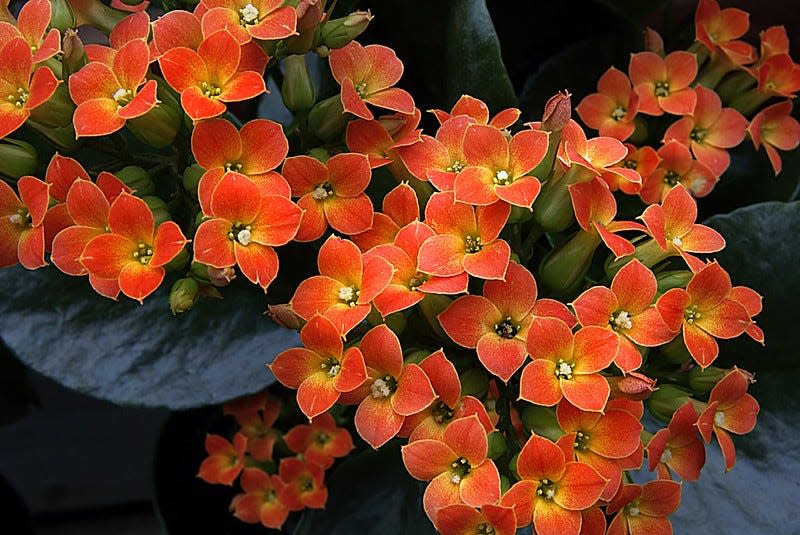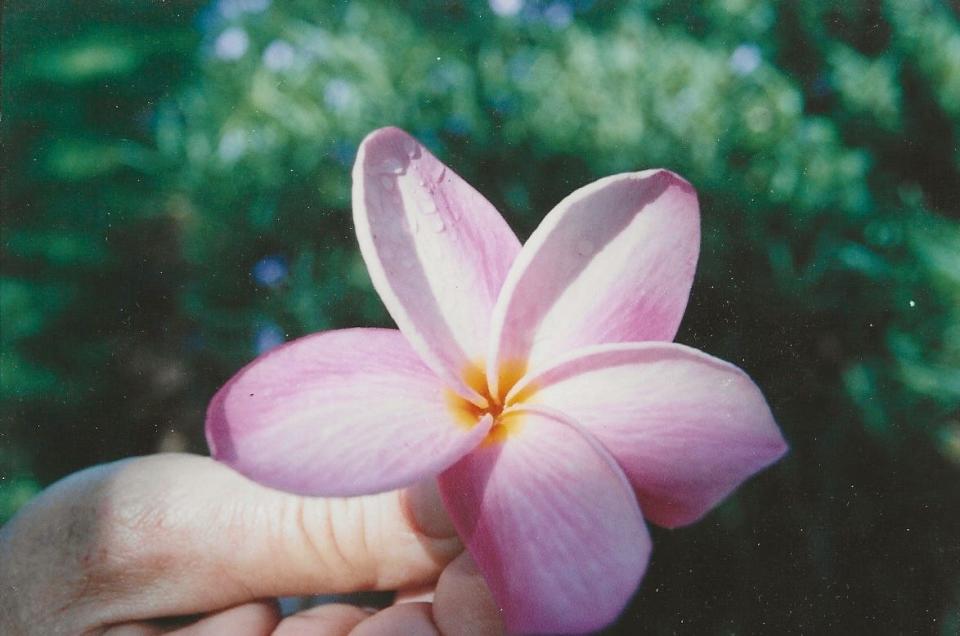From hanging baskets to small trees, Kalanchoes are eye-catching succulents

Kalanchoe is a strange name thought to be derived from a Chinese word.
Nearly 150 species of Kalanchoe – pronounced Kay-lan-KO-ee – are native from Madagascar to Arabia and India. Most are succulent, beautifully flowered plants from brushy habitats that receive moderate rainfall, followed by largely dry winters. That lifestyle prepares many Kalanchoes for success in the Sunshine State, with a few species verging on invasiveness.
Indeed, both Kalanchoe daigremontiana and K. delagoensis are commonly called "mother of millions." A close inspection of these plants clearly illustrates just how appropriate that name is. What might seem to casual observers like frilly leaf edges are actually leaf margins bristling with tiny plantlets. They’re ready to be blown or jostled off their "mothers" and onto the soil below, where they’ll take root. Also among Kalanchoes with this "cover the earth" penchant are K. pinnata and prolifera. Incidentally, commercial production of K. pinnata and delagoensis is prohibited in Florida.
Another war against a pest Giant African land snails appear to be invading Florida again
Does your garden need some zing? Zingibers are cool and fun to grow
Among palms The imposing Bismarck is pure royalty
The majority of Kalanchoes aren’t so reproductively aggressive, though many can grow new plants from leaves knocked off stems by critters or clumsy gardeners. That’s the case with the most widely sold Kalanchoe used in our landscapes: K. blossfeldiana. This foot-tall, free-flowering native of Madagascar is marketed as flaming Katie and Christmas kalanchoe. Among varieties offered are kinds with red, orange, pink, yellow or white blossoms. Plants grow in sun or part-day sun and have a lifespan of several years.
Next in popularity as a landscape and container subject is K. thyrsiflora, sometimes called "flapjack plant." A cold-hardy species up to 4 feet tall, it demands bright light and well-drained sites. Flapjack plant is unique, with semi-circular, wedge-shaped succulent foliage: those golden-green leaves flaunt eye-catching red margins. As plants age, they develop a stem and display yellow bell-shaped blossoms from mid-autumn to mid-spring.
Not as commonly cultivated but extremely pretty and suitable for hanging baskets is K. pumila. Just 10 inches tall, it boasts lovely silvery-blue leaves that provide an ideal background for clusters of pinkish flowers during the cool season. A surprisingly cold-hardy species, K. pumila can remain outdoors during most winters. Provide full sun and fast-draining soil.
Vastly different because it can eventually attain the dimensions of a small tree is felt bush (K. baharensis), from Madagascar. An incredibly distinctive species, it develops a freely branching trunk that supports large leaves covered with velvety hairs. Although generally golden brown, plants with silvery or gray foliage are also offered. During the cool season, felt bush – aka velvet leaf – flaunts large panicles of yellow-and-orange flowers. Unlike many Kalanchoes, this species gets by with part-day sun.
A range of Kalanchoes are sold online.
Plant to Ponder: Frangipani
About 45 species of Plumeria trees and shrubs are native to Tropical America.

Most plants sold are the result of hybridization and range from 6 to 45 feet tall. Plants – commonly called frangipani – are briefly deciduous. They bear fragrant warm-season flowers and thrive in poor soil in full sun. Propagate with cuttings.
This article originally appeared on The Ledger: Kalanchoes are eye-catching succulents, though some are invasive

